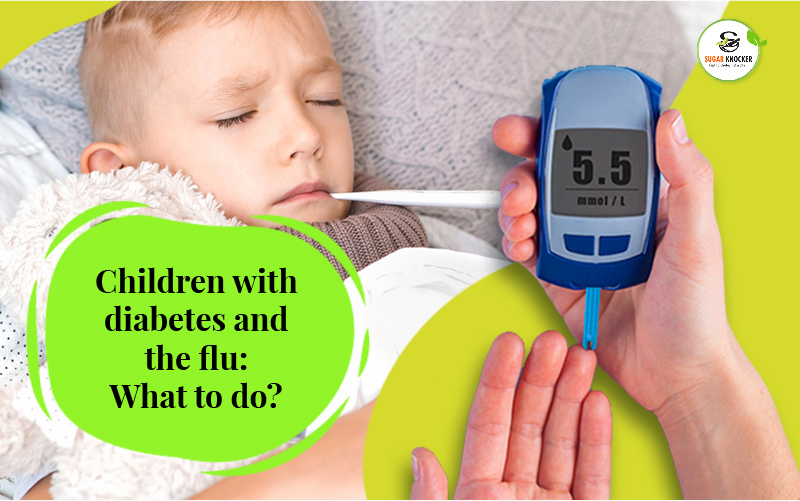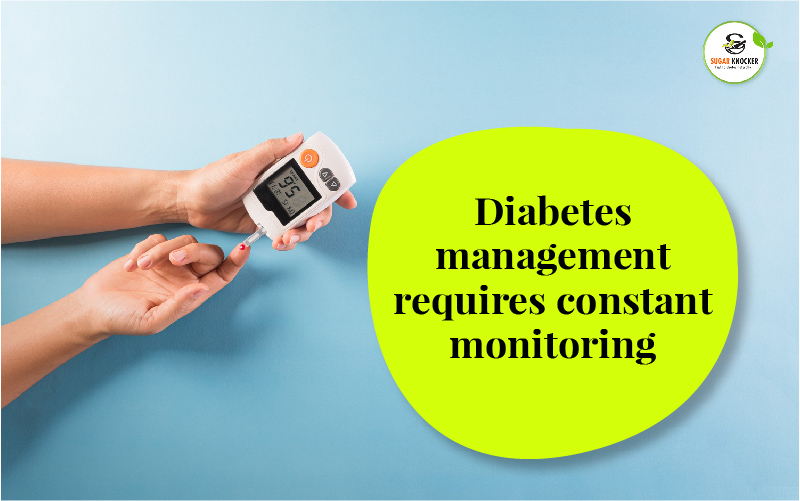
Colds and Flu are unpleasant, and if your child has type 1 or type 2 diabetes, they can be even more so. Infections, exhaustion, and sugar in some drugs can all make controlling your child’s blood sugar levels more challenging.
You may take action to avoid these issues in your child and ensure their safety. Your child’s body produces hormones to combat the illness when they have a cold. The drawback is that this makes it difficult to use insulin efficiently, and their blood sugar levels may rise as a result.
Suppose your child has type 1 diabetes and their blood sugar levels become difficult to control. In that case, they may develop complications such as ketoacidosis. It is caused by an accumulation of too much acid in their blood, which can be fatal. High blood sugar can cause a deadly condition known as diabetic coma; therefore, appropriate treatment management of type 2 diabetes is critical, specifically if your child is an adult.
How does Flu affects blood sugar level

Children with diabetes get sick now and then. Furthermore, because the impacts of disease on the body can lead blood sugar levels to rise or fall, taking a few extra measures to keep blood sugar levels under check is necessary.
You’ll be prepared to manage sick days with certainty if you plan and get help from your doctor.
In some ways, this is beneficial since it helps the body obtain the additional fuel it requires. However, in a person with diabetes, this can result in elevated blood sugar levels. While stress causes blood sugar levels to rise in diabetics, certain conditions cause lack of appetite, nausea, and diarrhea. Low blood sugar levels might result from a lack of food intake in somebody taking regular insulin dosages.
Whenever your child gets sick, the body interprets the sickness as stress, be it a simple ailment like a sore throat or a more serious one like dehydration or hospitalization. The body battles sickness in order to reduce stress. This necessitates a higher level of energy than the body ordinarily expends.
In a sense, blood sugar levels during sick days can be quite variable. You have no way of knowing how the sickness will impair your child’s diabetes management. On sick days, it’s especially crucial to monitor your child’s blood sugar levels and alter insulin dosages as required.
How to manage diabetes flu in children

- Maintain a steady pace: Ensure that the child takes the same diabetes medications unless the doctor advises otherwise. Even if your child’s food consumption is reduced, it’s critical that they continue to take insulin. The liver produces glucose and then releases it into the bloodstream. Even if your child does not consume a lot of food, the body still requires insulin to digest glucose. Some people on sick days require additional insulin than normal, and others with type 2 diabetes who do not take insulin may require some. In the absence of insulin, the body begins to burn more calories, ketones accumulate in the blood, and diabetic ketoacidosis develops as a result of diabetes flu.
- Monitor your blood sugar and ketone readings: It is advisable that you check your blood sugar levels on a regular basis. During sickness, urine ketones tests are frequently positive (even in non-diabetic children). However, for children with diabetes, monitoring can indicate an immediate caution sign those levels are rising to the point where diabetic ketoacidosis is developing. When and how often you need to monitor ketones should be dictated by your diabetes treatment strategy.
- Keep a close eye upon vomiting and diarrhea: Sometimes, children with diabetes contract a bug that triggers nausea, diarrhea, or stomach pain. However, since these symptoms can also be signs of diabetic ketoacidosis, it’s critical to keep a close eye on blood glucose and ketone levels and seek medical assistance as per the diabetes treatment plan’s requirements.
- Avoid dehydration: Make sure your child drinks an ample amount of water. Feed your child liquids that they enjoy, and that won’t aggravate signs like nausea. Your health care professional can advise you on what to offer to assist handle the sickness and keep diabetes under control.
- Choose your medications carefully: Some pharmaceuticals are provided to children to control sickness symptoms such as a cold or the Flu, despite the fact that doctors’ perspectives on their effectiveness differ. Components that elevate or drop blood sugar levels or mimic signs of high or low blood sugar levels may be present. Before giving your child any medication, consult your doctor. Recommendations for administering common medicines and what to look for on the packaging are frequently included within the diabetes management diet. Prescribed medications can, however, significantly elevate blood sugar levels. Make sure you’re aware of any potential side effects from any medications you’ve been prescribed. If you think your diabetes management diet or plan needs to be adjusted, contact your doctor.
- Take down notes: Retain data on the sickness, your kid’s symptoms, medications and doses used, food and drink ingested, as well as whether your child kept it down ready when speaking with your doctor. Also, keep track of any weight loss or fever and the outcomes of blood sugar and ketone level tests.
- Help your child in getting some rest: When your child is sick, urge them to relax and recover as much as necessary.
Constant checkup for diabetes management

Monitoring blood sugar levels according to the diabetes management plan can benefit you and your child in the following ways:
- have a better understanding of and control over your child’s diabetes
- avoid short-term diabetes indicators as well as potential health issues
- quickly and thoroughly evaluate issues and implement changes to the diabetes treatment strategy
- Keep track of sick days
- a greater understanding of how food, activity, and medications affect blood sugar levels
A proper diabetes management diet is essential for children’s appropriate growth and development.

Healthy nutrition, in addition to blood sugar monitoring and insulin shots, is a critical component of diabetes management. Scheduled meal and snack times and constant food portions are essential components of the care plan. With the guidance of your nutritionist, you may tailor this program to your child’s requirements and insulin regimen. Based on your child’s insulin regimen, you can integrate suppleness with the amount of food and the number of meals per day.
The licensed dietician has worked with children and young people in the past. Your diabetic team’s registered dietician is a vital component. Meal records assist the dietitian in determining what your child eats and help them draft up a diabetes management diet tailored specifically for your child.
Preventing from Dehydration

Diabetes and dehydration, when combined, can lead to a drastic impact on your child’s blood sugar levels. In addition, thirst and dry mouths, both of which indicate moderate dehydration, are frequently the earliest symptoms of diabetes.
What, though, is the link connecting diabetes and dehydration?
This link is more about how your child’s body reacts to elevated blood sugar levels.
Maintaining a regular blood sugar level enables your child’s body to retain healthy fluid stability. However, it also aids in maintaining hydration. Drinking water might help your child’s body get rid of extra glucose as well as battle dehydration.
If your child has diabetes, you should have them drink enough fluids every day — about 1.6 liters (L) or 6.5 cups for girls and 2 L or 8.5 glasses for boys, unless stated otherwise in their diabetes management diet.
However, while water is a terrific all-around liquid and is actively encouraged for improving fluid intake and reducing dehydration, other beverages can also help with dehydration.
Add a few squeezes of fresh lime or lemon juice to regular water to add taste. Caffeine-free herbal teas, and skim milk are some other beverages that can help you stay refreshed.
Energy drinks, fruit juices, and sodas, on the other hand, should be avoided. These drinks are high in sugar and can raise your blood sugar levels even more. It’s fine to drink sparkling water, but make sure it is sugar-free.
Schedule a call with doctor

Contact your health care provider if your child shows any of the symptoms given below:
- lacks appetite or is unable to eat or drink
- Experiences a round of vomiting and diarrhea that lasts a long time.
- Has low blood sugar as a result of insufficient food intake — but try and raise it (e.g., by injecting glucagon if required) prior to calling a doctor or going to the hospital.
- Has high blood sugar levels for numerous tests or doesn’t respond to more insulin.
- contains ketones in the blood or urine in medium or significant levels
- may be experiencing diabetic ketoacidosis symptoms
- may be experiencing diabetic ketoacidosis symptoms
Conclusion
Diabetes is a severe and complicated disease that shouldn’t be ignored even in children; while diabetes flu is becoming more common these days, it is time to make healthy lifestyle choices and not ignore the symptoms right from the start. If your child has diabetes, don’t panic and consult your doctor and get a diabetes management diet curated for them.

